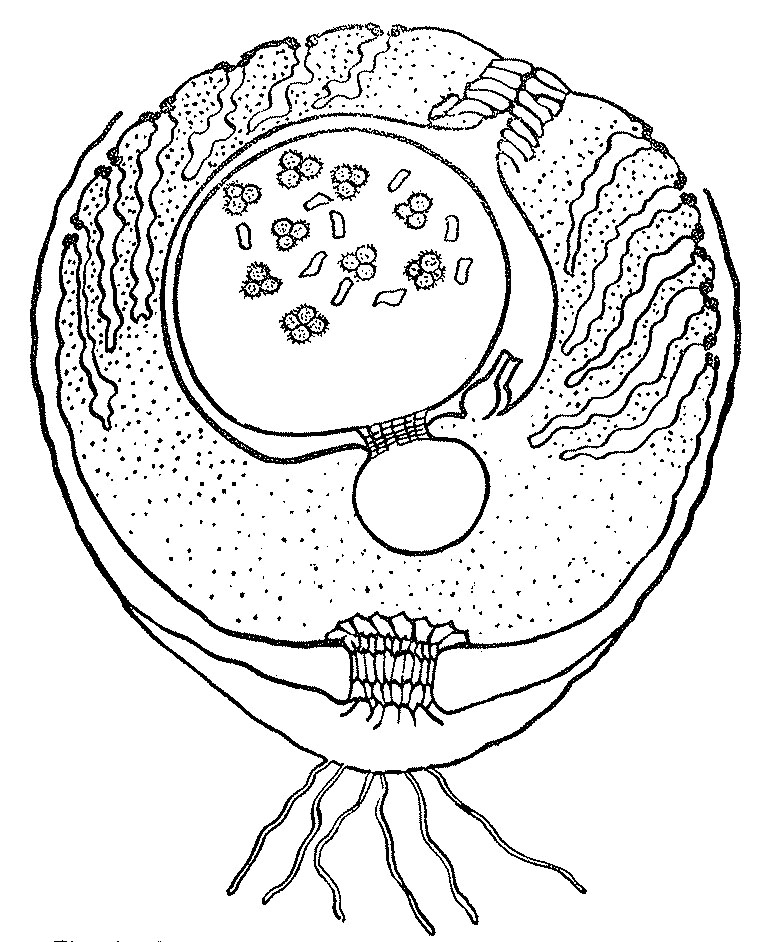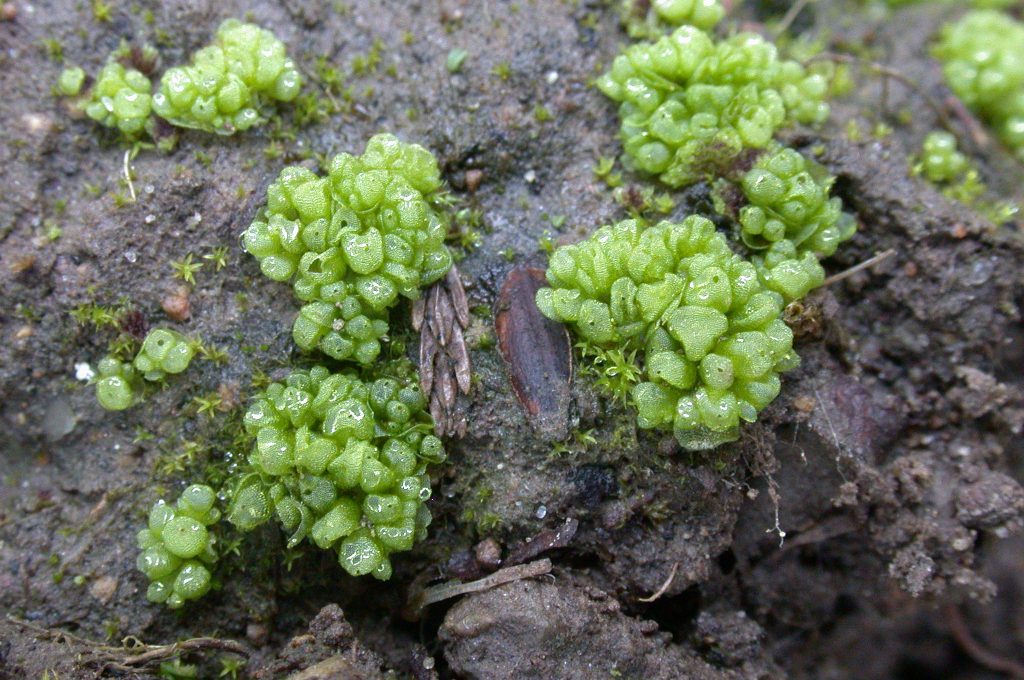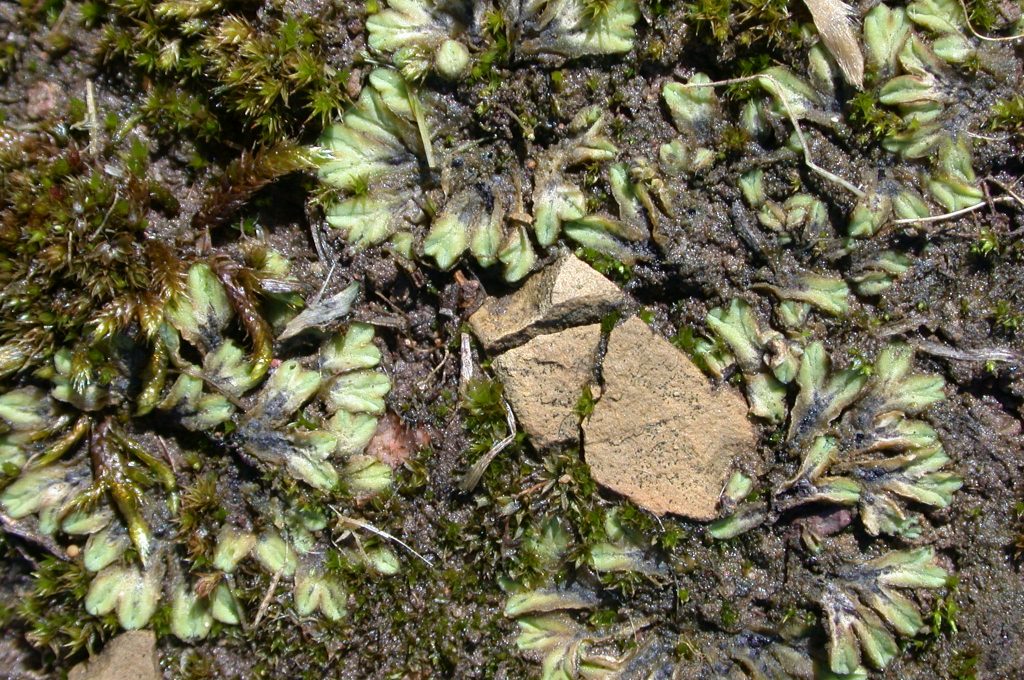As far as liverworts go, Monocarpus is a rather strange plant. It’s very small, in itself not that unusual for a bryophyte, but rather problematic if you need to understand what it actually looks like, as a good handlens, and preferably a binocular microscope, are required. It’s also not easily found. It’s known from sites in Australia, and South Africa – but not from the sort of sites that liverworts are generally found in. The short-lived plants grow on seasonally wet salt-pans and gypsum soils. Unfortunately Australia has recently been suffering from a series of droughts, and ephemeral salt-pan plants have just not been much in evidence. Herbarium collections of the plant are quite rare and fragile, but what we do know of its morphology doesn’t really fit in well with any other known liverworts – it has a unique combination of characters. Added to that, various people who have worked on it in the past have come to different conclusions about where it fits in the evolutionary tree of plant life.

Monocarpus sphaerocarpus line drawing from Carr 1956, reproduced with permission from CSIRO PUBLISHING
The first known collection of the plant was by Mrs Masie Carr, in 1955, by a roadside in north-west Victoria, Australia. From this her husband, Dr Denis J. Carr, described the new genus (and species), Monocarpus sphaerocarpus, in 1956. His publication notably includes an illustration that, while lacking in beauty, is nonetheless one of the most useful diagrams that has yet been produced for understanding the plant’s structure. Carr also managed to grow some spores, and, based on the morphology of the sporelings, considered his new genus to be related to Sphaerocarpos (hence the similar species name).
However, in 1961 Dr Johannes Proskauer published two papers on Monocarpus. In the first, in the journal Taxon, he explained why he considered that the name of the plant was not validly published, and instead it should be known as Carrpos, while in the second he examined in detail the morphology of several sporelings he was able to grow, from spores that he had been sent by Carr. From these, he concluded that the spores that Carr had observed were probably from ferns rather than from Monocarpus, and thus Carr’s conclusion about the phylogenetic relationship of Monocarpus was probably wrong.
Proskauer instead considered that Monocarpus belonged “along a neotenous series between Clevea and Riccia”. Essentially, this means that he thought Monocarpus to belong to quite an advanced group of liverworts, but to only have juvenile, rather than adult, characters.
Several molecular phylogenies have been produced for liverworts, using changes in DNA sequences to build a picture of the relationships between lineages (e.g. Forrest et al. 2006; Laenen et al. 2014). While these have allowed us to answer many other questions about liverwort evolution, for example showing that what a plant looks like is not always the best indicator of what it is related to (as in the placement of Pleurozia, which has leaves, with the Metzgeriales, a lineage of liverworts that lack leaves), a lack of recent collections for Monocarpus mean that it has not been possible to include it in any of these analyses, as good quality DNA has not been available.
Thus we have yet to confirm whether it was Carr or Proskauer who had the correct placement for Monocarpus.
(Proskauer’s taxonomic name change was not taken up, and a paper by Arthur Bullock, again in Taxon, explains why Monocarpus remains the valid name for the plant.)
REFERENCES
Bullock AA (1961) Our Corpus and Carrpos – a reply. Taxon 10, 240-242
Carr DJ (1956) Contributions to Australian Bryology. I. The structure, development, and systematic affinities of Monocarpus sphaerocarpus gen. et sp. nov. (Marchantiales). Australian Journal of Botany 4, 175-191.
Forrest LL, Davis EC, Long DG, Crandall-Stotler BJ, Clark A, Hollingsworth ML (2006) Unraveling the evolutionary history of the liverworts (Marchantiophyta): Multiple taxa, genomes and analyses. Bryologist 109, 303–334.
Laenen B, Shaw B, Schneider H, Goffinet B, Paradis E, Désamoré A, Heinrich J, Villarreal JC, Gradstein R, McDaniel S, Long DG, Forrest LL, Hollingsworth ML, Crandall-Stotler BJ, Davis EC, Engel J, Von Konrat M, Patino J, Vanderpoorten A, Shaw AJ (2014) Extant diversity of bryophytes emerged from successive post-Mesozoic diversification bursts. Nature Communications 5, 5134.
Proskauer J (1961) On Carrpos I. Phytomorphology 11, 359-378.
Proskauer J (1961) Our Corpus and Carrpos. Taxon 10, 155-156.
On Monocarpus – http://stories.rbge.org.uk/archives/17112
Finding Monocarpus, in the Herbarium – http://stories.rbge.org.uk/archives/17146
Finding Monocarpus, in the field – http://stories.rbge.org.uk/archives/17272
Lost before found: Was there more than one species in Monocarpus? – http://stories.rbge.org.uk/archives/17904




1 Comment
1 Pingback